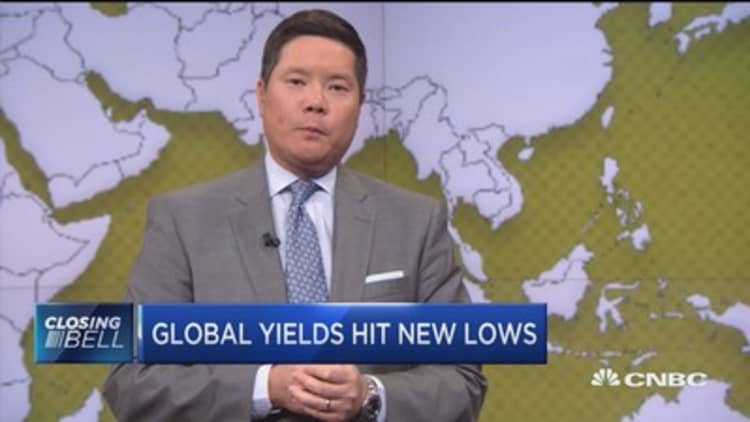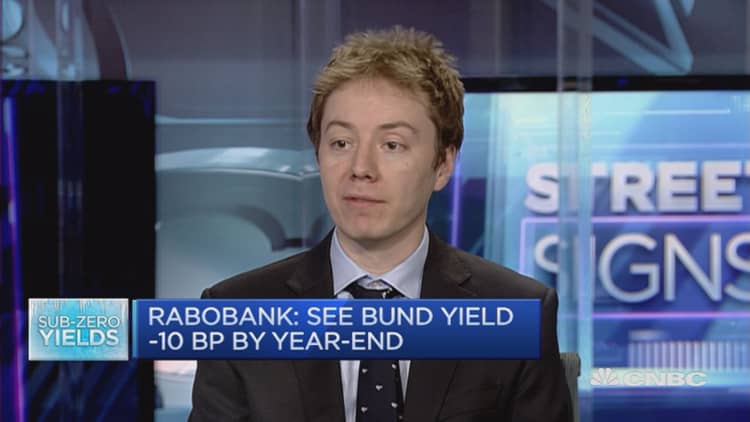


U.S. sovereign bond prices held higher Wednesday, with investors seeking safe havens on the back of a lull in stock gains and a downturn in oil prices.
The Treasury Department auctioned $12 billion in 30-year bonds at a high yield of 2.172 percent.
The bid-to-cover ratio, an indicator of demand, was 2.48, higher than a recent average of 2.35.
Indirect bidders, which include major central banks, were awarded 68.5 percent, well above a recent average of 61 percent. Direct bidders, which includes domestic money managers, bought 8.4 percent, below a recent average of 10 percent.
The yield on the benchmark 10-year Treasury note, which moves inversely to its price, moved lower to 1.4702 percent, while the yield on the 30-year Treasury bond was also lower at 2.1725 percent.
US Treasurys
U.S. Treasurys
German Bunds — viewed as a safe-haven asset akin to Treasurys — rose on Wednesday as Germany sold 10-year notes with a negative yield for the first time.
The German Finance Agency sold 5 billion euros of 10-year notes with a zero coupon, fetching an average yield of -0.05 percent. The bid-to-cover ratio was 1.2.
"It's the first time a 10-year Bund fetched a negative yield during an auction," a debt office spokesperson said, adding that market liquidity for Bunds was very high and that investors were attracted by Germany's top-notch credit rating, according to Reuters.
German Bunds
German Government Bonds (BUND)
U.S. stocks traded about flat on Wednesday. The Dow and did set all-time intraday highs shortly after the open, but have since pared their gains.
The Labor Department said on Wednesday import prices increased 0.2 percent last month after an unrevised 1.4 percent jump in May. Economists polled by Reuters had forecast import prices rising 0.5 percent in June.
The pan-European STOXX 600 index struggled to gain traction at the start of Wednesday's session before trading higher.
Oil prices turned negative Wednesday, as U.S. benchmark West Texas Intermediate crude fell 4.27 percent to $44.80 per barrel, while Brent crude dropped 4.46 percent to $46.31.
Dallas Fed President Robert Kaplan, speaking at the World Affairs Council of Greater Houston, said that the Federal Reserve is "very sensitive" to the strength of the dollar. He said he expects "slow" GDP growth of about 2 percent.
The Federal Reserve said that there's little indication that inflation will surge any time soon in its Beige Book report of anecdotal information collected from business contacts across the country.

